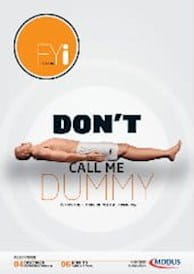POPULAR TV medical dramas have tended to focus their attentions on the fast-paced world of surgery or A&E where glamorous doctors save lives against all the odds and just in the nick of time.
But what these programmes usually fail to highlight is the crucial role played by the single largest group of NHS hospital doctors – anaesthetists. Because when it all starts to go wrong with critically ill patients, difficult venous access or compromised airways most doctors will admit to feeling an enormous surge of relief at seeing “the gas man” arrive on the scene.
Specialists in this field are generally understood to be the doctors “who put you to sleep”, but their role extends beyond this. Anaesthetists are involved in acute and chronic pain management and intensive care. They regularly are involved in emergency situations around the hospital, providing vital management of the airway and advanced respiratory and cardiovascular support when required.
Anaesthetists need to have a good understanding of not only medicine and surgery but also of physics and chemistry because they work with medical gases and specialised equipment. It is the only specialty in which experience in intensive care is an integral part of the training programme. Anaesthetics is challenging because specialists often work under great pressure, but it is also widely described as a practical, varied and friendly specialty.
Entry and training
Anaesthetics is not always given a great deal of teaching time at medical schools, making it difficult for junior doctors to know if it’s the specialty for them. The foundation system has some anaesthetic placements and also allows doctors to experience anaesthetics in ‘taster weeks’ during FY1 or 2 placements.
The Royal College of Anaesthetics (RCoA) provide an excellent website with detailed information on careers and other aspects of the specialty at www.rcoa.ac.uk. They advise juniors to discuss career options with specialty trainees or the clinical tutor of the anaesthetic department of the hospital where they are training. They also run an annual information day for foundation doctors.
Although members of the public may not always realise anaesthetists are doctors, it’s important to recognise they are a multitalented group with many transferrable skills. The diversity of the specialty allows trainees to mould their careers to areas of interest and specialised skills. There are many subspecialties which work closely with other specialties – e.g. paediatrics, obstetrics, cardiac surgery and neurosurgery – while others such as intensive care medicine and pain medicine have evolved independently.
Upon completion of FY2, trainees will start with at least two years of core training during which they must achieve a basic level of competence. This is a heavily supervised period with focused training to allow the development of specialised skills. There are two entry routes: directly into the anaesthesia programme or via Acute Care Common Stem (ACCS) training which will usually take one year longer.
After core training the trainee has to apply for, and be accepted on to a specialty registrar training programme for a further five years. Specialty registrars are also supervised by consultants as they gain experience in all subspecialty areas. Once all training requirements are completed, the trainee will obtain a certificate of completion of training (CCT) and be able to practise at consultant level.
The Royal College of Anaesthetists sets the high standards of the training. The curriculum covers all areas including pain medicine and intensive care. There are two examinations and trainees cannot progress to the third and fifth years of training until they have passed the relevant parts. Those who pass become fellows of the college and can use FRCA after their name.
The College ensures a number of professional skills are taught across the seven-year programme, including:
• Professional attitudes
• Clinical practice
• Team working
• Leadership
• Innovation
• Management
• Safety in clinical practice.
In practice
The anaesthetist's skills are used in patient care throughout the hospital although their major role does still lie in providing anaesthesia during surgery. They work in varied multidisciplinary teams. This may involve preparation of surgical patients for theatres and the relief of post-operative pain. They are integral to the functioning of the obstetric unit, providing pain relief and peri-operative care. They are members of the cardiac arrest and trauma teams working around the hospital and regularly in accident and emergency. They work in intensive care units and chronic pain management. They provide sedation and anaesthesia for patients undergoing a variety of procedures including interventional radiology, endoscopy and ECT.
Anaesthetists are widely involved in teaching and training and may also lead or manage the various departments in which they play a major role such as day surgery, operating theatres, recovery units, high dependency units, critical care services and resuscitation services.
The future
The future of the anaesthetist is bright. The NHS Careers website describes the specialty as being “centrally placed” in the acute services of hospitals. They are the largest department in the hospital. New technologies and surgical techniques mean that anaesthetists have to remain active in developing their skills and underline their crucial role in the peri-operative period. Allied specialties of anaesthesia are also growing: chronic-pain treatment has an expanding pharmacopoeia and critical care is now being practised throughout the hospital with 'Outreach' and the Hospital at Night project. Anaesthesia is central to these. The Group of Anaesthetists in Training have an information booklet, Who is the Anaesthetist?
Joanne Curran is associate editor of FYi
Q&A Dr Sophie Shapter, ST5 in anaesthetics
What attracted you to anaesthetics? As a medical student I enjoyed my experience of anaesthetics. It was quite different to other specialities I had experienced. As a senior house officer in A&E I was introduced to the “caped heroes” who would come and sort out the really sick patients and take them away. I liked the idea of being able to deal with acutely unwell patients, initiating treatment and seeing the results of your work immediately. Anaesthetics offered all of this but, importantly, not all of the time, which was fortunate because I was also attracted to time spent in theatre.
What do you enjoy most about the job? I really enjoy the acute challenges we can be faced with on call and having the skills to deal with them; it’s very rewarding when you actually make a difference. I also enjoy working within the theatre environment, the varied exposure to surgical specialties and being a valued member of the multidisciplinary theatre team. Are there any downsides? The work can be very challenging but the biggest downside I think is shift work and nights. None of us enjoy it and it only seems to get more difficult as you get older.
What do you find most challenging? Anaesthetics is quite different to any other specialty within medicine so when you start your training the learning curve is particularly steep. You can feel overwhelmed by how much there is to learn in the beginning. What about the role has most surprised you? The huge spectrum of acute illness that we can be involved in from trauma calls to cardiac arrests, from septic shock to multi-organ failure and acute life-threatening asthma . We also perform a wide range of clinical skills and procedures.
What is your most memorable experience so far? Passing my FRCA. The exams in anaesthetics are renowned for being particularly difficult. A colleague once said that the exams are payback for having such a great job and if they were easy then every doctor would be an anaesthetist.
What advice would you give to a final year or FY trainee considering anaesthetics? Anaesthetists are very friendly folk, so gain some experience by doing a taster week at your hospital. This will also give you an idea of whether it’s for you or not. Some people, believe it or not, find the specialty boring.
This page was correct at the time of publication. Any guidance is intended as general guidance for members only. If you are a member and need specific advice relating to your own circumstances, please contact one of our advisers.
Read more from this issue of FYi

Save this article
Save this article to a list of favourite articles which members can access in their account.
Save to library

